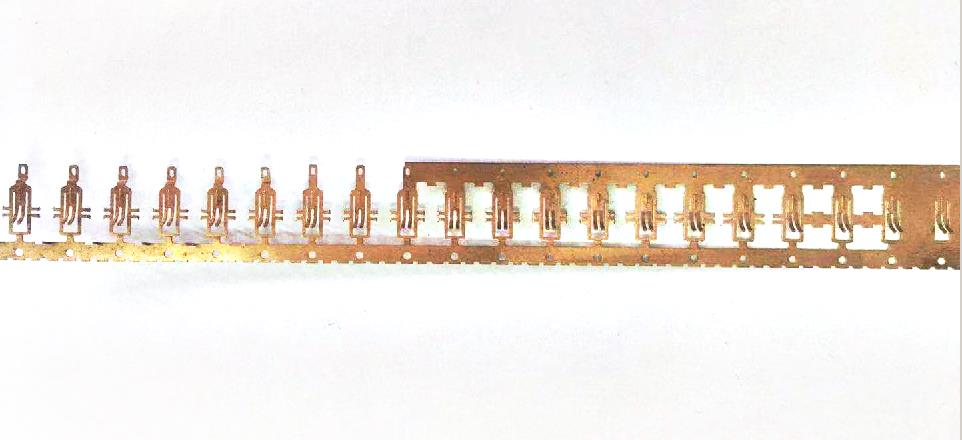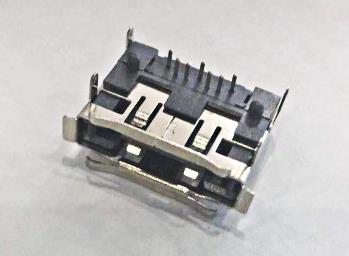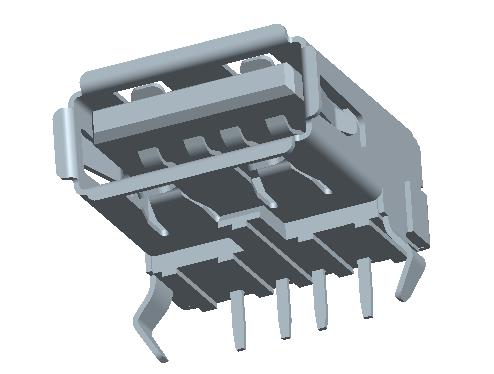FOCUSES ON PLASTIC INJECTION AND MOLD DESIGN.

DONGGUAN LONGKE ELECTRONIC TECHNOLOGY CO., LTD.
Focus on R & D, production and marketing of precision connectors, electronic connecting lines, metal stamping, mold design
Enterprise mailbox
sales@longke-china.com
NEWS
FOCUSED ON CONNECTOR
主页 > Home > News > Knowledge Encyclopedia >
Knowledge Encyclopedia
USB 3.0 for storage media applications
- Release date:19-10-23 10:13
- Clicks:196
brief introduction
By accelerating the performance of internal and external storage conversion, USB 3.0 brings a fundamental change to the storage market. Because USB 3.0 can make the external drive achieve the same data transmission speed as the internal drive of PC, users can certainly make full use of the external memory than in the past.
USB 3.0 can achieve this new performance level without changing the waveform factor of USB connector in PC, and can be fully backward compatible in all other aspects. In this way, USB 3.0 also provides an ideal solution for all kinds of memory applications.
This paper provides a brief introduction of USB 3.0 and various factors that affect the application of USB 3.0. Although we focus on the application of memory here, we also involve some other applications, because the universality of USB is the main reason for using this interface for external disk drives.
For storage applications, the relationship between USB and SATA is particularly interesting assuming that they are interfaces for external and internal storage, respectively. Because the current USB 3.0 can support the highest conversion rate of disk drives, it is possible to use the universal SATA drive as an external USB 3.0 peripheral to a large extent. By using devices that can bridge USB 3.0 and SATA, it is the most direct way to add USB 3.0 interface to the SATA drive.
According to the market demand, Fujitsu company launched the world's first high set forming usb3.0-sata bridge chip. By using the waveform factor that can be easily matched with the existing system, the chip greatly simplifies the implementation of the external hard disk of the PC and Mac platform, and provides transparent data transmission between the USB 3.0 port and the external disk drive. As a result, this device helps to take advantage of USB applications that have moved to external SATA (eSATA) for performance reasons, making it easy for drive manufacturers to take advantage of the universal connectivity promised by USB 3.0.
USB 3.0 introduction
USB 3.0 - also known as superspeed USB - provides a standard interface for devices connected to PCs or audio / HF devices. From keyboard to high-throughput disk drive, all kinds of devices can use this low-cost interface to connect plug and play smoothly, and users basically don't need to spend too much time on it. While maintaining compatibility with USB 2.0, the new USB 3.0 also provides the following enhancements:
It greatly improves the bandwidth - up to 5Gbps full duplex (480mpbs single duplex for USB2.0)
Better power management
It can make the host provide more power for devices, so as to realize USB rechargeable battery, LED lighting, mini fan and other applications.
Identification device that can make the host faster
New protocol makes data processing more efficient
USB 3.0 can transfer large capacity files (such as HD movies) at a limited storage rate. For example, a flash drive with USB 3.0 can transfer 1GB of data to a host in 3.3 seconds, while USB 2.0 takes 33 seconds.
Driven by the increasing demand for resolution and storage performance of consumer electronic devices, we hope to achieve wider media applications through broadband Internet connection. Therefore, users need faster transmission performance to simplify downloading, storage and sharing of a large amount of multimedia content. USB 3.0 plays an important role in providing consumers with the simple connectivity they need.
When used in consumer devices, USB 3.0 will solve the problem that USB 2.0 can't recognize battery free devices. The host can slowly reduce the current through USB 3.0, so as to identify these devices, such as cell phones with broken batteries.
For system and ASIC developers, the extensive practicability of USB 3.0 chip and IP ensures that every design requirement can be met in time. This full range of support is particularly important for standards like USB 3.0 because speed, advanced protocols, and various cable lengths (from inches to meters) make design and standard compatibility a challenge.
SATA and USB
In recent years, USB, eSATA and FireWire have made many remarkable achievements in the field of personal computers among various devices competing to become external memory interfaces. At this point, serial ATA (SATA) replaces all other interfaces in the internal drive connectivity of consumer PCs. Although the new CompactFlash version known as CFAST will be built on the basis of SATA, the earlier parallel ATA (PATA) is still in use in the industrial and embedded applications where CompactFlash is used as the storage medium.
Since its launch in 2004, eSATA has challenged USB 2.0 and FireWire in external memory applications. ESATA transfers data with the external devices at the same speed supported by the internal drives of SATA. It is worth mentioning that eSATA interface can support data transmission rate up to 3gbps. Even at the actual rate reduced by encoding, eSATA's data rate is sufficient to be used as the highest speed hard disk drive capable of transmitting data at 120 / S (about 90mbps).
Although eSATA is only used for storage applications, its performance enables it to capture market share of USB 2.0 and FireWire. Other benefits of SATA include low processor costs. USB 3.0 is significantly better than eSATA and FireWire 800. In 5Gbps full duplex, USB 3.0 is faster than eSATA and FireWire 800, which can reach 800Mbps full duplex. (note that eSATA's 3gbps data is single duplex, while USB 3.0 provides full duplex. Although we can't elaborate here, but
By accelerating the performance of internal and external storage conversion, USB 3.0 brings a fundamental change to the storage market. Because USB 3.0 can make the external drive achieve the same data transmission speed as the internal drive of PC, users can certainly make full use of the external memory than in the past.
USB 3.0 can achieve this new performance level without changing the waveform factor of USB connector in PC, and can be fully backward compatible in all other aspects. In this way, USB 3.0 also provides an ideal solution for all kinds of memory applications.
This paper provides a brief introduction of USB 3.0 and various factors that affect the application of USB 3.0. Although we focus on the application of memory here, we also involve some other applications, because the universality of USB is the main reason for using this interface for external disk drives.
For storage applications, the relationship between USB and SATA is particularly interesting assuming that they are interfaces for external and internal storage, respectively. Because the current USB 3.0 can support the highest conversion rate of disk drives, it is possible to use the universal SATA drive as an external USB 3.0 peripheral to a large extent. By using devices that can bridge USB 3.0 and SATA, it is the most direct way to add USB 3.0 interface to the SATA drive.
According to the market demand, Fujitsu company launched the world's first high set forming usb3.0-sata bridge chip. By using the waveform factor that can be easily matched with the existing system, the chip greatly simplifies the implementation of the external hard disk of the PC and Mac platform, and provides transparent data transmission between the USB 3.0 port and the external disk drive. As a result, this device helps to take advantage of USB applications that have moved to external SATA (eSATA) for performance reasons, making it easy for drive manufacturers to take advantage of the universal connectivity promised by USB 3.0.
USB 3.0 introduction
USB 3.0 - also known as superspeed USB - provides a standard interface for devices connected to PCs or audio / HF devices. From keyboard to high-throughput disk drive, all kinds of devices can use this low-cost interface to connect plug and play smoothly, and users basically don't need to spend too much time on it. While maintaining compatibility with USB 2.0, the new USB 3.0 also provides the following enhancements:
It greatly improves the bandwidth - up to 5Gbps full duplex (480mpbs single duplex for USB2.0)
Better power management
It can make the host provide more power for devices, so as to realize USB rechargeable battery, LED lighting, mini fan and other applications.
Identification device that can make the host faster
New protocol makes data processing more efficient
USB 3.0 can transfer large capacity files (such as HD movies) at a limited storage rate. For example, a flash drive with USB 3.0 can transfer 1GB of data to a host in 3.3 seconds, while USB 2.0 takes 33 seconds.
Driven by the increasing demand for resolution and storage performance of consumer electronic devices, we hope to achieve wider media applications through broadband Internet connection. Therefore, users need faster transmission performance to simplify downloading, storage and sharing of a large amount of multimedia content. USB 3.0 plays an important role in providing consumers with the simple connectivity they need.
When used in consumer devices, USB 3.0 will solve the problem that USB 2.0 can't recognize battery free devices. The host can slowly reduce the current through USB 3.0, so as to identify these devices, such as cell phones with broken batteries.
For system and ASIC developers, the extensive practicability of USB 3.0 chip and IP ensures that every design requirement can be met in time. This full range of support is particularly important for standards like USB 3.0 because speed, advanced protocols, and various cable lengths (from inches to meters) make design and standard compatibility a challenge.
SATA and USB
In recent years, USB, eSATA and FireWire have made many remarkable achievements in the field of personal computers among various devices competing to become external memory interfaces. At this point, serial ATA (SATA) replaces all other interfaces in the internal drive connectivity of consumer PCs. Although the new CompactFlash version known as CFAST will be built on the basis of SATA, the earlier parallel ATA (PATA) is still in use in the industrial and embedded applications where CompactFlash is used as the storage medium.
Since its launch in 2004, eSATA has challenged USB 2.0 and FireWire in external memory applications. ESATA transfers data with the external devices at the same speed supported by the internal drives of SATA. It is worth mentioning that eSATA interface can support data transmission rate up to 3gbps. Even at the actual rate reduced by encoding, eSATA's data rate is sufficient to be used as the highest speed hard disk drive capable of transmitting data at 120 / S (about 90mbps).
Although eSATA is only used for storage applications, its performance enables it to capture market share of USB 2.0 and FireWire. Other benefits of SATA include low processor costs. USB 3.0 is significantly better than eSATA and FireWire 800. In 5Gbps full duplex, USB 3.0 is faster than eSATA and FireWire 800, which can reach 800Mbps full duplex. (note that eSATA's 3gbps data is single duplex, while USB 3.0 provides full duplex. Although we can't elaborate here, but
- 【Printing】
- 【Collection】
- 【Return】
相关产品RELATED PRODUCTS
Address: No.28, southwest Lang Road, Henan Industrial Zone, Jinxia, Chang'an Town, Dongguan City, Guangdong Province



